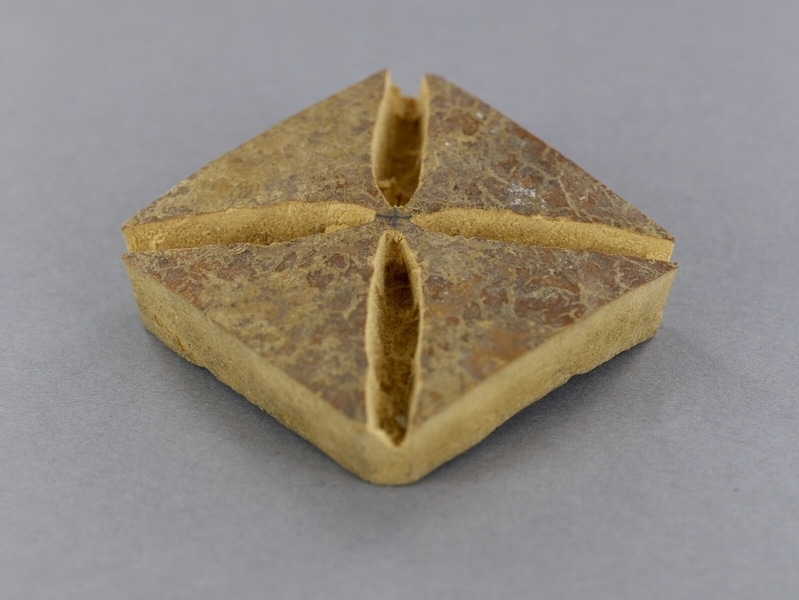Adinkra Stamp Item Number: 1774/14 from the MOA: University of British Columbia


Description
Square pattern stamp made from a piece of gourd. Iron cross design carved in relief. Four holes on underside.
History Of Use
Adinkra is an ideographic communication system. Each sign represents a host of interconnected ideas, more quickly referenced by a phrase or proverb. There are over 100 signs in common use, although some carvers create a few of their own. Speaking in proverbs and illusions is a sign of prestige and refinement in Akan culture- Adinkra is a way to do this in visual form. Over the 20th century, Adinkra has become a source of pride and a marker of West African identity both in regional nationalisms (particularly Ghanaian) and in the diaspora. In its earliest iterations, these characters appeared only on textiles worn at funerals by elite members of society. Since gaining independence in the mid-20th century, usage in West African has grown to be unlimited by social class or medium - anyone can wear them and they can appear on a wide range of material from everyday textiles (e.g. 1774/1) to incorporation in architecture. For everyday textiles, cloth is stamped with Adinkra stamps (1774/12-16) at local workshops.
Cultural Context
textiles
Iconographic Meaning
Symbol is afrafanto - 'butterfly', the limits of humanity, mortality, and fate.
Specific Techniques
Stamps are made out of dry, thick pieces of calabash gourd, after the gourd has been cut into multiple palm sized pieces. On each piece the pattern of the symbol is drawn with pencil, then that symbol is carved out in relief with a gouge. The stamps are dipped in adinkra aduru, an ink prepared by boiling chunks of iron slag and bark from the Bridelia ferruginea tree, locally called Badie, into a thick paste that is liquefied before use. Stamps are soaked in between uses on different pieces of fabric. Grooves and negative spaces of the symbol are scraped clean between printings.
Item History
- Made in Ghana during 1960
- Collected during 1960
- Owned by Penny Gouldstone
- Owned by Brian Gouldstone before November 10, 1998
- Received from Brian Gouldstone (Donor) on November 10, 1998
What
- Name
- Adinkra Stamp
- Identification Number
- 1774/14
- Type of Item
- stamp
- Material
- gourd fruit
- Overall
- height 1.2 cm, width 5.5 cm, depth 5.5 cm
Who
- Culture
- Asante
- Previous Owner
- Penny Gouldstone and Brian Gouldstone
- Received from
- Brian Gouldstone (Donor)
Where
- Holding Institution
- MOA: University of British Columbia
- Made in
- Ghana
When
- Creation Date
- during 1960
- Collection Date
- during 1960
- Ownership Date
- before November 10, 1998
- Acquisition Date
- on November 10, 1998
Other
- Condition
- good
- Accession Number
- 1774/0014